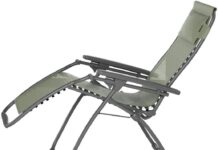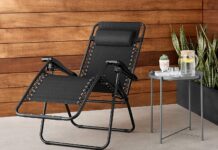What do you imagine your posture would be like if you did not weigh anything? What is the most neutral of position for arms, legs, spine, and neck?
NASA has tried to give an answer to that question when measuring body positions 20of its crew members aboard the Skylab space station and early shuttle missions in the ‘70s and ‘80s. The man-system integration standards were designed to help solve problems for crew members in space, but ever since then, they have been applied to designs on the ground, like the ergonomic car seats and these zero gravity chairs.
Designing around the average turned out to be a bad fit for some people, and NASA’s follow-up studies aboard shuttle missions have basically debunked the concept that you could find one posture that would be ideal for everyone.
Lying back with your hips bent and your knees elevated has proven quite comfortable than the slab-like position that many recliners and lounge chairs give.
The ideal chair from Human touch is one of the early examples of a furniture company that applied the NASA standards to a chair design that promises relief for both back pain and pressure points. It is quite a pricey chair.
Some brilliant and unknown engineer figured out just how to make neutral-posture reclining work on a mass-production scale with bent steel tubing and plastic joints, and due to that wise manufacturing, you can have a part of NASA’s legacy on your patio or even in your living room that goes for less than $50.
Zero gravity chairs are the envy of quite a number of people like the pool partyers, beachgoers, and porch sitters, all this is because of their smart design. They are also known as patio recliners, that help to elevate your feet and legs while they also support your back and give you a feeling of weightlessness. The result of these is total relaxation and a sense of floating.






